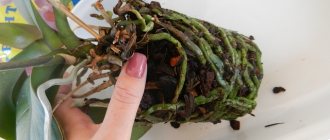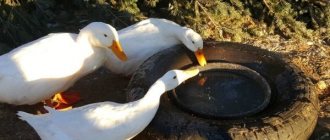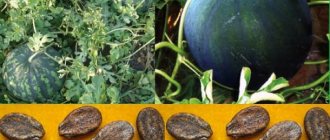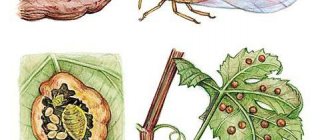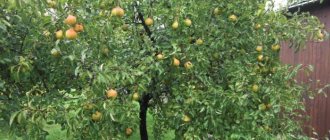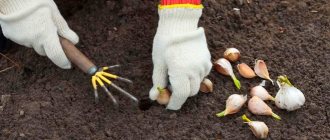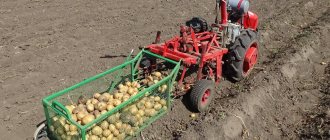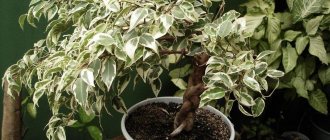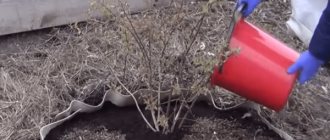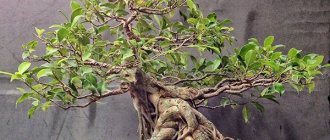Subtleties and tricks of plucking
At first glance, it may seem that the process of plucking a wild duck is quite simple, but this is not so. Before properly plucking a duck, you need to take into account that a game bird is fundamentally different from a domestic bird.
There are several rules on how to properly handle game birds:
- It is not recommended to process uncooled poultry - at least 3-4 hours must pass after it has been harvested. This is done so that the fat hardens, which will avoid tearing the skin when plucking. If a lot of time has passed after slaughter, the feathers begin to be pulled out with difficulty;
- Before plucking game, the head is often cut off. In this case, you should hang the bird by its legs and wait until the blood drains (as a rule, this takes no more than half an hour);
- It is customary to process wild poultry dry, especially if you plan to use not only meat, but also duck down and feathers (most often for stuffing a pillow or blanket), then wild poultry is processed exclusively in a dry way. However, there are also methods of hot plucking;
- The process of plucking game should begin with large feathers (tail, wings) and only then remove smaller feathers. To avoid damage to the skin, large feathers are removed in the direction of their growth, while small ones can be plucked in any direction. You can clean the bird from any remaining feathers using singeing or a dull knife.
This is interesting! Abroad, the down of wild birds is highly valued; 100 grams of fresh down is valued at tens of euros, which is why many hunters handle their trophies so carefully.
Storage of duck feathers and down, areas of application
Feather and down are valuable raw materials in the household. It is used to fill pillows and make quilts. Down is also used in the production of woolen knitted products, handicrafts and even interior decoration. Feathers growing in wing flaps are used as a protein supplement to the diet of animals (ground into powder).
Duck feathers are used as filler for blankets and pillows
Small details:
- the feather yield from one duck carcass is on average 115–125 g (for comparison, more from a goose, less from a chicken);
- Some of the procurement of raw materials begins while the bird is still alive. During molting twice a year (in spring and autumn), the duck still loses its down, and sometimes some of its feathers. Both are collected, gradually accumulated;
- raw materials from carcasses after slaughter are also suitable if they are collected correctly and do not spoil the tissue structure.
- Collected feathers and down are sorted separately from each other (sorting will take a lot of time, but there is no way to do without it).
- Rinse the material to clean water. You can use delicate detergents, but it is best to make a solution of laundry soap.
- Dry it. To prevent raw materials from scattering from the slightest draft, it is recommended to place them in spacious gauze covers. As it dries, you need to turn the bag over several times to prevent the contents from sticking together.
- Small feathers after plucking carcasses can be used together with the trunk, since it is soft and flexible and will not prick in pillows and blankets.
- Large feathers, unless we are talking about decoration, are stripped of vegetation. These fibers are subsequently mixed with fine feathers and/or down and used for filling blankets, pillows, and quilted clothing.
- Until all the material is used, it is stored in thick fabric bags or in containers with a lid. The required quantity is obtained as needed. If they were dried correctly during preparation, the feathers and down will be well preserved without the appearance of lice.
Methods for plucking wild ducks
You can quickly pluck a duck at home in several ways; which one is more suitable depends on the further use of feathers and down.
Dry plucking
This simple and simple method is often used by hunters; for this you need:
- spread a blanket or any paper on the surface to pluck the duck on. You need to start the plucking process, as expected, with the largest plumage of the tail and wings, plucking in the direction of their growth, gradually moving to the plumage on the back.
- We remove feathers from the breastbone and neck of the duck. To avoid damage to the skin, carefully clean the carcass from small feathers;
- At the last stage of plucking, you need to remove the small remaining fluff. If you are hunting or on vacation, this can be done by simply scorching the duck over a fire;
- If you need to clean poultry from fluff at home, you will need a regular burner. To do this, sprinkle the duck with flour (it helps absorb moisture well) and hold it over the flame for several minutes. However, do not overdo it so as not to burn the thin skin. To remove traces of soot from scorching, rinse the duck well with running water. This simple procedure will rid the carcass of hemp and the remains of small feathers; they will easily burn or separate.
The dry method of plucking a wild duck is not only quite simple, but also practical. Poultry plucked in this way can be stored in the freezer for quite a long time.
Hot plucking
The hot method of plucking ducks (scalding) is used by many poultry farmers. It should be remembered that the scalding process begins 3-4 hours after the poultry has been harvested; after this time, you can begin the plucking process.
Traditional scalding of a duck: Heat water in a large container (kettle, pan) to about 80 degrees, so as not to overheat the duck skin, it is not recommended to bring it to a boil. Scald the duck evenly to steam all the feathers. Compliance with this technology is mandatory, otherwise it will not be possible to pluck the carcass quickly and efficiently.
Cutting into portions
Cutting methods can be selected depending on what dish you plan to prepare. If you cook the carcass correctly, you can save a lot of time. If the meat will be grilled, combined with vegetables or stewed in gravy, the pieces should be small. Large ones should be made when you have to roast the bird over a fire, wrap it in foil and put it in the oven. Any available method is suitable if the housewife intends to prepare broth or cook meat to add to a salad.
First you need to gut the duck. They take a sharp knife, cut the meat in the cloaca area and drag it along the stomach all the way to the breast bones. The intestines are removed, and the esophagus and goiter are pulled out from the side of the neck. They try not to damage the spleen, since in this case the meat will acquire a bitter taste. The stomach, liver and heart are not thrown away. This is a good raw material for making offal soup.
Using a sharp knife, remove the neck and head. These areas contain vertebral bones that cannot be easily removed. That's why it's better to take a large knife. It can also be used to cut into segments. First, the wings are cut off by running a kitchen tool along the joints in the bend areas. Cut through the duck from the throat all the way to the keel. They go along the spine, cutting until 2 halves are formed. They are washed, dried, wrapped in film and placed in the freezer. You can also cook them immediately.
It is allowed to separate the breast, as it is considered less caloric. It can be used by people who are on a weight loss diet. You don't have to remove subcutaneous fat when cutting. Fat is important if you plan to cook the bird over a fire. During heat treatment, it does not melt, due to which a tasty crust forms on the surface.
Unconventional methods
There are several ways to pluck wild ducks using unconventional methods.
In a bag with an iron
One of the common hot methods of plucking game is the procedure using a canvas bag.
For this method you will need a bag, an iron and a basin. To pluck a wild duck this way you will need:
- scald the carcass using a canvas bag and an iron. To do this, you need to soak the bag in a container of boiling water for 15-20 minutes, then squeeze it well. Next, wrap the bird in it and gently iron it with a hot iron for 10 minutes. This is important for good preservation of the feather in case of its further use for its intended purpose (for example, stuffing blankets, pillows, feather beds, etc.);
- remove the duck from the bag and scald the carcass itself (1-2 minutes), while trying to steam all the feathers. Removing feathers in this way is carried out against the direction of their growth. You need to start with the wings, then to the tail, then the back, neck and breast of the wild duck;
- The final stage of the hot plucking method (as well as the dry method) is singeing the carcass to remove the fluff on the skin. When the game is thoroughly cleaned of feathers and fluff, it must be thoroughly washed with running water, removing all soot after singeing.
In the oven
It has something in common with the previous method; it was previously used in Rus' in stoves with cast iron hearths. Hot metal in this case played the role of a modern iron. Today, a bag containing a wild duck carcass, previously soaked in boiled water and wrung out, is rolled out onto the surface of a hot baking sheet, but it is important not to overdo it, since prolonged exposure to high temperature can damage the thin duck skin.
Using a screwdriver attachment
This seemingly difficult task can be completed within 10 minutes using a special screwdriver attachment. To do this, you need to attach a screwdriver with an attachment using tape to a stump of ideal height. A prerequisite is that the nozzle should protrude somewhat beyond the stump.
A slaughtered, well-dried bird must be brought to the switched-on nozzle and the feathers mechanically plucked from it: starting from the breast, then throughout the body, ending with the wings. The remaining feathers after this procedure are removed with a blunt knife and hands.
Tips and tricks
Hot plucking methods are intended for poultry that the housewife will cook immediately. The dry plucking method involves long-term storage of meat. Dry-plucked ducks are frozen. To make the task easier, you can purchase a special apparatus for plucking poultry.
To gut and cut a duck, you need to prepare several knives:
- wide cleaver;
- narrow boning knife;
- medium sized knife.
It is advisable to soak a hunted wild duck in water for several hours and change the water during this time. This is done to remove an unpleasant odor - wild duck meat smells like mud.
The wings should be cut off at the first fold, the legs should be cut off at a distance of 2 cm from the first joint, the head should be cut off, preserving the neck as much as possible.
How to gut a duck?
Immediately after plucking and singeing, you can gut the duck. Many novice cooks do not know where to start and how to cut up a duck. To do this, you need to know some features of this fairly simple process:
- Cut off the tips of the wings with a sharp knife. After this, exactly at the joint, break and cut off the legs. Next, make a transverse incision in the area of the larynx and carefully remove the trachea from there. Then make a cut in the lower part of the belly of the carcass (this is the place where the bone base ends). Make all cuts carefully so as not to cut the thin walls of the intestines and remove the insides, maintaining their integrity.
- Following this, the intestines, stomach, liver, intestines and heart are removed, and during the gutting process, excess fat is separated, which will later be useful in the household (stewing, frying, etc.). A duck gutted in this way is thoroughly washed with water to remove blood.
How to cook roast duck with potatoes in the oven
Some housewives are afraid to cook roast duck in the oven. Let's say “no” to fear and write down the recipe. Easy to cook at high temperatures and easy to marinate the meat. The main rule is that the bird carcass should be well thawed by the time the recipe begins.
What you will need:
- duck carcass – 1 pc.;
- coarse salt;
- fresh or dried thyme - a bunch;
- potato tubers – 1.5 kg;
- onion heads – 1.5 pcs.;
- ground black pepper – 3-4 pinches.
Cooking process:
- Rinse the duck. Wipe away moisture with a paper towel. Rub with coarse salt. Place a bunch of thyme inside. Place on a greased ceramic baking tray. Cook in the oven at 290℃ for 20 minutes. The carcass will be golden brown on top, but not cooked enough inside. That's how it should be.
- Peel the potatoes. Place in a large saucepan. Do not cut the tubers into pieces, use them whole. Pour boiling water over it. Cook until done. The tubers will be soft, but will not fall apart. Drain off all liquid.
- Remove the duck carcass to a plate. There is fat left in the pan. Do not pour it out under any circumstances. Fold the tubers into the fat.
- Peel the bulbs. Rinse. Cut into large pieces. In slices or half rings. Add to potatoes. Stir the mixture into the fat. Add some salt. Sprinkle with ground pepper.
- Cut the duck into portions. Place among the vegetables on a baking sheet. Bake in an oven already preheated to 290℃ for 25-30 minutes.
How to butcher a duck?
Cutting the carcass can be easily done using kitchen scissors. To cut a duck, you need to place it on its back and make a longitudinal cut with scissors along one side of the sternum (from the cervical region to the belly). With the help of such an incision, the sternum area of the duck carcass will be revealed. Then make another cut along the spine of the carcass and separate the two halves from each other.
Next, you need to make cuts in the area of all joints and separate the legs and wings. And now you can safely begin to indulge in culinary fantasies related to preparing delicious duck meat dishes.
Important! It should be noted that after plucking, it is better to butcher the wild duck as soon as possible. However, unlike poultry, it is recommended to thoroughly soak wild duck in water for several hours before cutting, otherwise the meat will retain a specific swampy smell and taste. And only after this the finished carcass can be used to prepare a wide variety of dishes.
These rather simple, accessible methods of plucking, gutting and butchering wild ducks, as well as other birds, will help and come in handy at home.
How to kill a bird
12-16 hours before slaughter, the birds stop feeding. If the slaughter is planned for the morning of the next day, in the evening the ducks that go under the knife are separated from the herd, the feeders are removed from them, leaving only water. In addition, electricity is left in the room overnight.
2 methods of poultry slaughter:
- Cut the carotid artery with a knife. Having suspended the duck by its legs, they take it by the head, pull it back, and then cut the neck. The knife is held so that the tip is slightly inclined to the ground.
- Using a cleaver. The duck is taken by the wings and its head is placed on a block. By sharply lowering the ax, they separate the head from the neck.
After slaughter, the bird is hung by its legs for 10-15 minutes so that the blood drains well from it.
Removing feathers along with skin
Hunters know several ways to pluck a wild duck effortlessly and in a short time. If you plan to make a stuffed duck, then the feathers are removed in a different way. The technique involves maintaining the integrity of the feather cover. To remove the feather cover you will need a sharp knife:
| № | Helpful information |
| 1 | separate the paws, wings and head from the carcass |
| 2 | separate the area around the tail and shoulder joints |
| 3 | lay the duck on its back, cut the peritoneum |
| 4 | Using hands and a knife, remove the skin on the chest and back. To do this, the fingers are placed between the muscle tissue and the skin. |
| 5 | tendons and small bones are cut with pliers |
| 6 | the skin with feathers is removed like a shirt |
If there is a need to preserve the wings, they are not cut off. Incisions are made around the shoulder joint, and the skin from the wings along with the flight feathers is carefully removed. Do the same with the tail feathers. You will have to cut off the entire tail.
The carcass is washed, used to prepare soup, or placed in a refrigerator. To make it convenient to store the meat, skinning is carried out, and the duck is cut into legs, fillets, and wings. How to properly cut a wild duck carcass?
Butchering the carcass
After plucking, the duck is cut into pieces. If the cover was removed from it along with the skin, then there is no need to cut the sternum, the head and paws are already separated from the body. Subsequently, the following manipulations are performed:
- the duck must be gutted; to do this, they hold her by the neck and pull out the esophagus with a sharp movement;
- along with it they take out the stomach, liver, lungs;
- the gallbladder is removed from the liver; it is thrown away; the liver is used for shulum or roast;
- the stomach is cut open and the food bolus is cleared; remove the hard shell; the shell is often dried, crushed, and used as a medicine for diarrhea;
- then the hams and wings are separated with a knife and cutters;
- cuts are made along the ribs on both sides to make it easier to select the fillet;
- fillet is cut from the ribs; or separate the meat with your hands; it usually lends itself well;
- the back area is not cut; there is little meat there, it is usually not touched; the remaining skeleton is used for shulum.
Store duck meat in the refrigerator at a temperature of 4 C. It will not lose its taste and will remain fresh for 3 days. It is recommended to use it in the future. To store for a longer period of time, the meat is placed in the freezer, where the temperature is kept down to -13 C. It is recommended to use it within 3 months. The product can be kept in the freezer for up to six months, but at a lower temperature, up to -25 C.
To prevent duck meat from becoming loose when defrosting, it is first kept in the refrigerator at a temperature of 0 or 8 C. When the main part of the product has thawed, it can be removed from the chamber and brought to complete thawing at room temperature.
It should be borne in mind that wild duck is less fatty than domestic duck. The product is considered dietary, but it is necessary to check the fresh carcass for the presence of parasites. Helminths can enter the body through grass or fish. Before eating, the meat is thoroughly boiled.
Hunters hunt only for drakes. They do not touch females and ducklings. There are always more males in a flock of birds than ducks. You can recognize them by their large sizes. In autumn, drakes of almost all wild breeds have bright plumage. It lasts until the mating season. Their meat is fattier, their feathers are stiffer, and they fit tightly to the body.
DUCK TRAPS! I'M COOKING SHULUM FROM WILD DUCK!
Title : DUCK TRAPS! I'M COOKING SHULUM FROM WILD DUCK!
Viewing time 15:21
Title How to catch wild ducks
Watching time 6:47
Title How wild geese and ducks are butchered in western Canada.
Viewing time 8:07
Source: GoFerma.ru
Three delicious recipes
In fact, wild duck can be cooked like any other game. But those who know how to deliciously cook wild duck talk about one nuance. Without a doubt, it can be fried, boiled and baked in the oven, but you need to keep in mind that wild duck meat is not friendly with many spices, especially bay leaves.
If you are interested in recipes for dishes from other types of poultry, then pay attention to the “Chicken under a Fur Coat” salad. There are many ways to prepare it using a variety of ingredients.
Recipe No. 1
Bake wild duck with lingonberry jam.
Lingonberry jam is universal, as it can highlight the taste of duck that has been baked in the oven. It can also be used as a sauce while eating cooked meat.
We will need:
- Game carcass weighing 1.5 kg;
- Lingonberry jam;
- Black pepper (ground);
- Salt (preferably coarse).
Cooking method:
- A fully cooked wild duck carcass must be cleaned of subcutaneous fat so that only meat remains;
- Mix equally ground black pepper with salt and thoroughly rub the entire carcass with this mixture, both inside and outside;
- Place the rubbed carcass in the oven on a baking rack with a baking sheet;
- Cook the wild duck in the oven at 240 degrees for an hour and a half;
- The juice that will drain from the duck into the pan must be constantly scooped out and poured over the cooking carcass so that it is juicy and not dried out;
- Remove the cooked carcass from the oven and let cool;
- Cut the wild duck into beautiful pieces and serve
- Along with the baked duck, serve a bowl of lingonberry jam and any side dish, for example, buckwheat porridge or a potato dish;
We invite you to familiarize yourself with Iberis sowing before winter
If you don’t have a roasting rack, you can coarsely chop various vegetables and place them on a baking sheet and place the grated wild duck carcass on top. Or you can use foil. Make balls of foil and place them evenly on a baking sheet, with wild duck placed on top of the balls.
Using resin and wax
Hunters rarely pluck wild ducks. This takes a lot of time. They take resin or wax with them. These substances tend to melt quickly, and when cooled they also quickly harden. This characteristic is used by hunters. A kind of plucking of ducks is carried out in several stages:
- make a fire and place a large pot of water on it;
- wax is thrown into boiling water;
- You should first prepare another container with cold water;
- the duck is washed, the shot is removed from it;
- dip the bird in melted wax for 5 minutes;
- so that the wax hardens on the surface of the feather cover, the duck is lowered into a container with cold water; the waxy crust hardens quickly;
- remove the crust from the surface of the duck; The wax is cleaned along with the feathers.
Resin is used in a similar way. There is no need to be afraid that it will penetrate the skin. The resin only covers the feathers. There are no “stumps” left on the skin, the skin does not tear. The carcass remains light and ready to eat. The technique is used for mallards, wigeons, and pintails. These are commercial species of wild ducks. Their plumage is highly dense and rigid. It is difficult to pluck them dry. It is difficult to use the hot method of removing feathers. Removing feathers will take a lot of time.
If resin is used to remove feathers, wild bird meat will have a smoked taste. Fishermen use resin more readily than wax. It covers the carcass more densely. The bird's body seems to be enclosed in a black case. After hardening, the resin case is removed. The unusual taste of the bird is also attractive.
